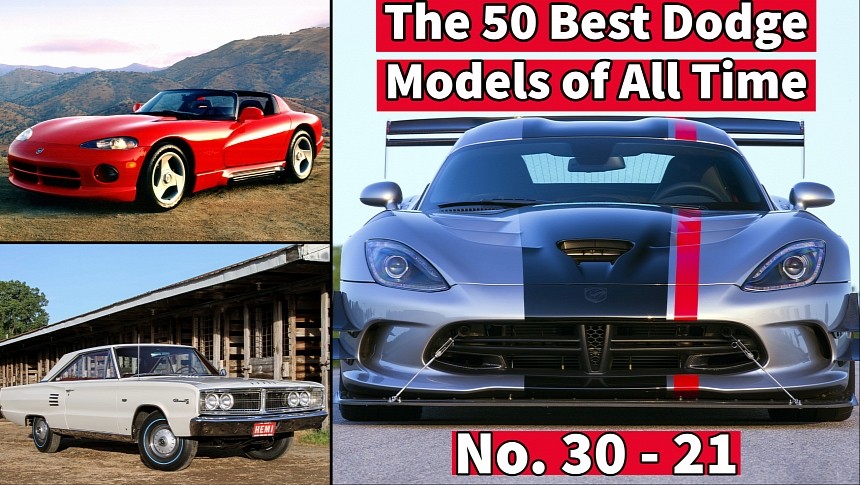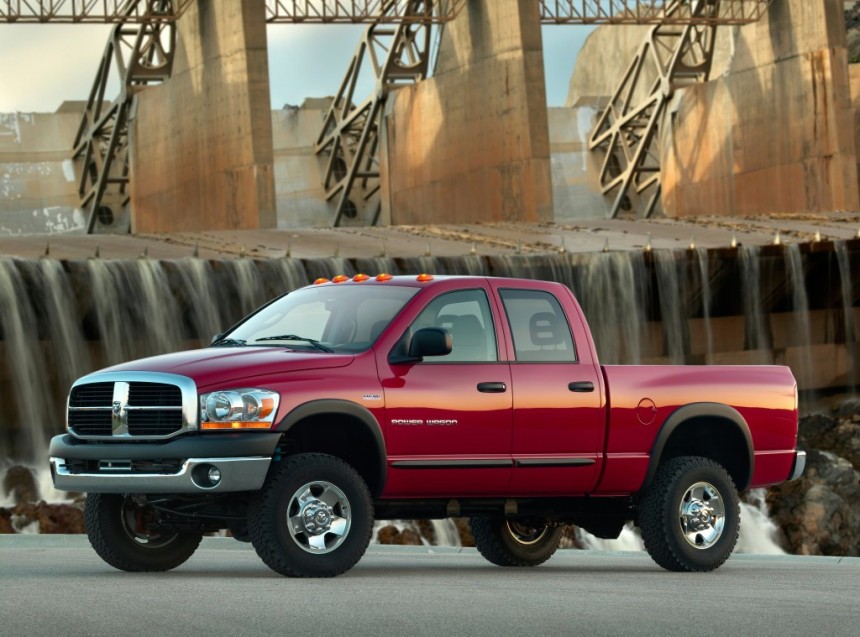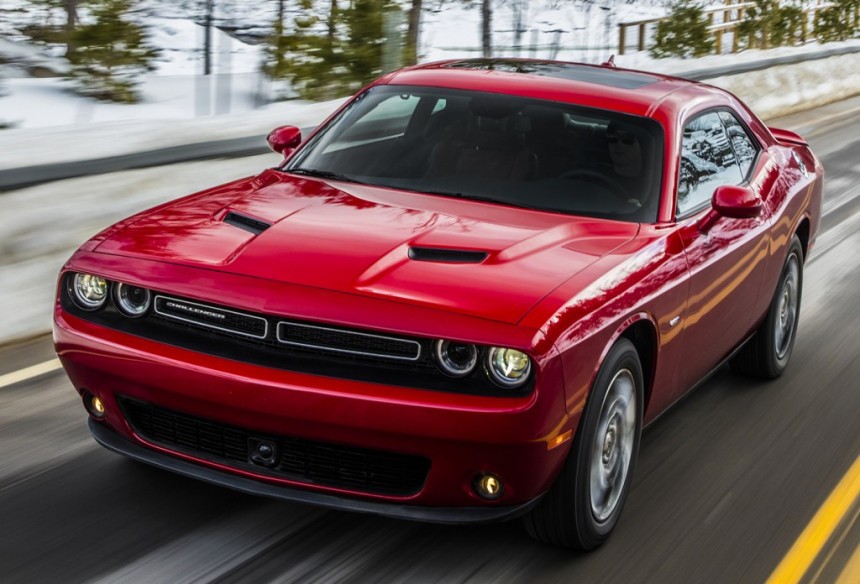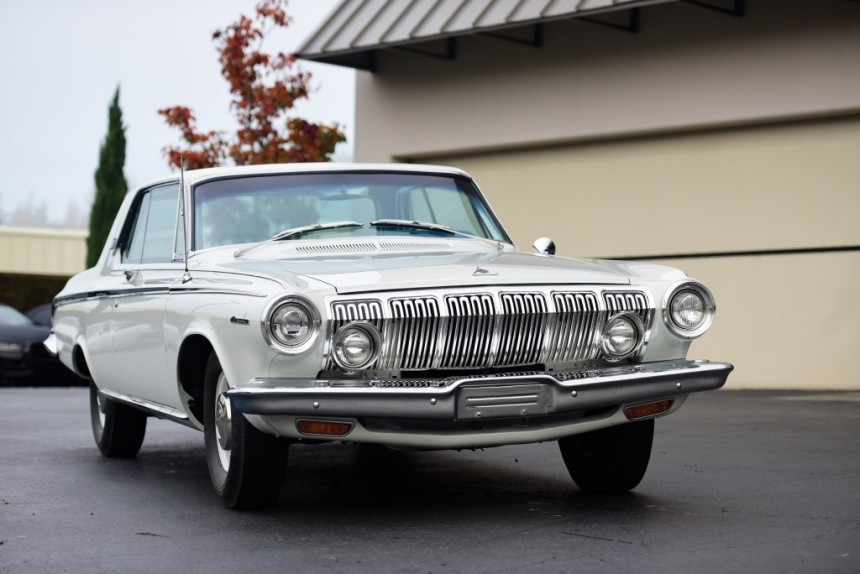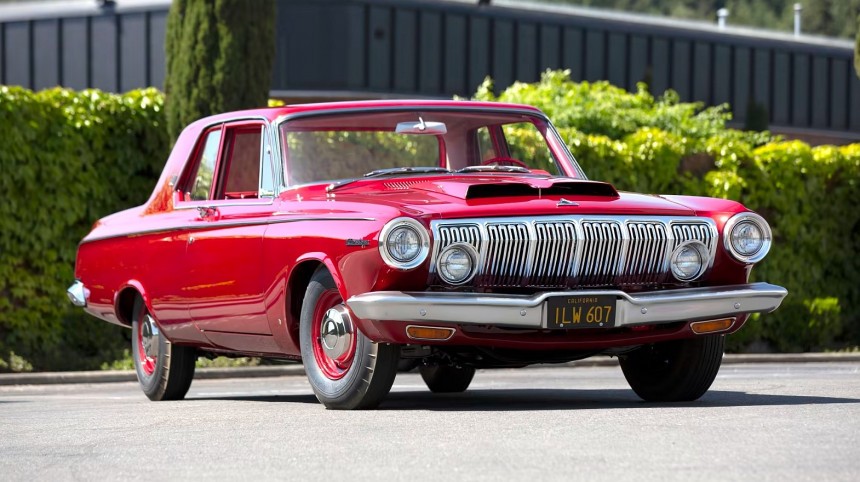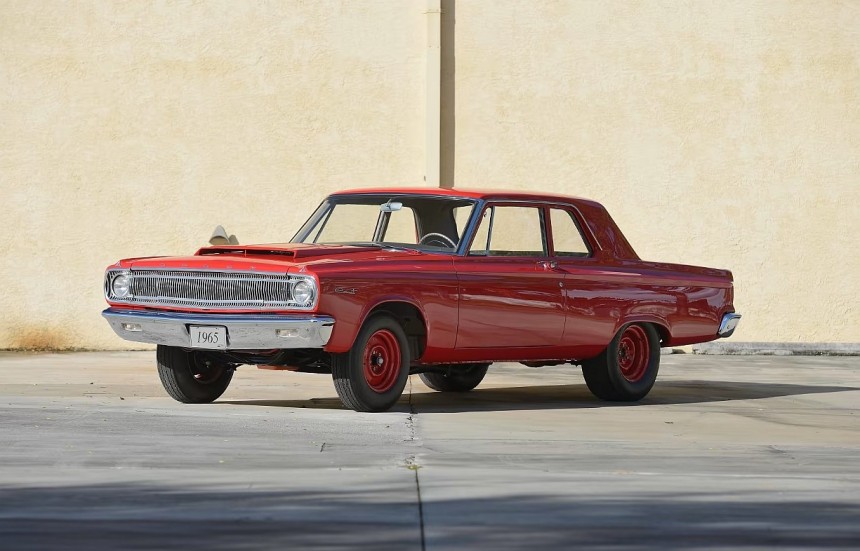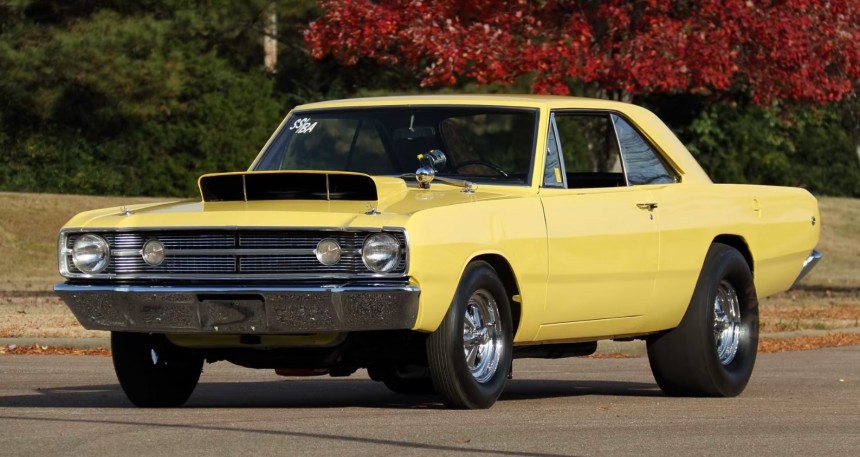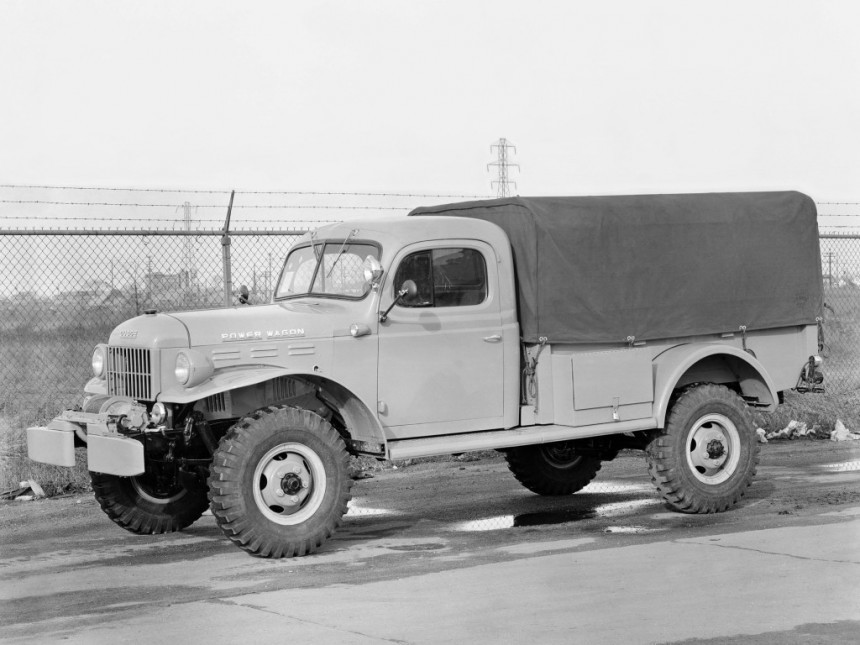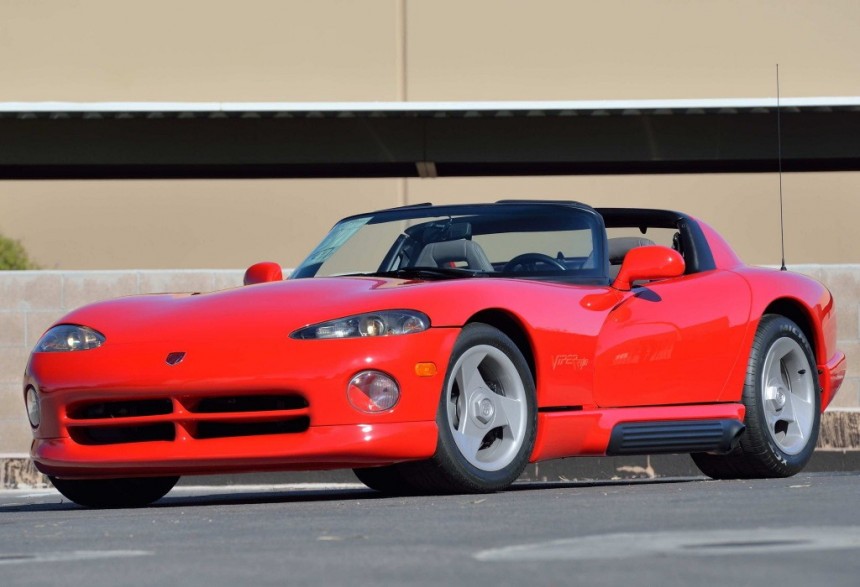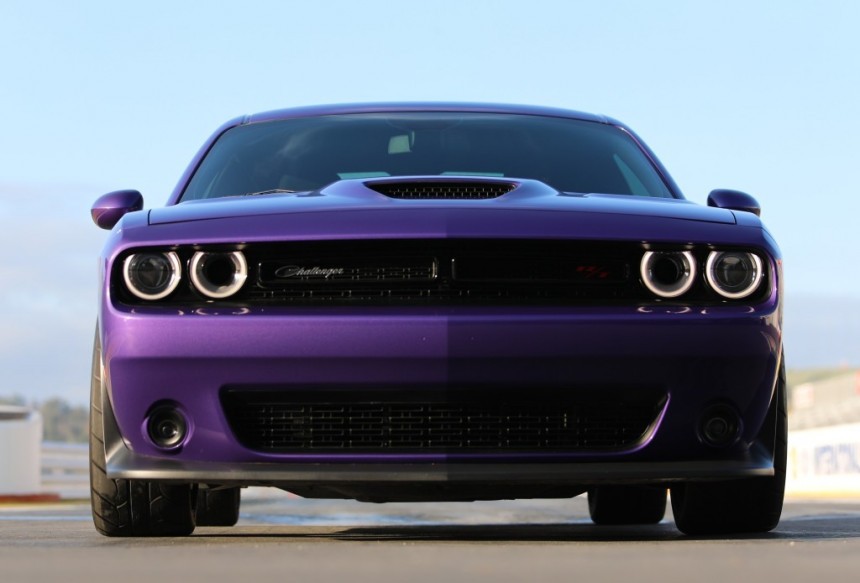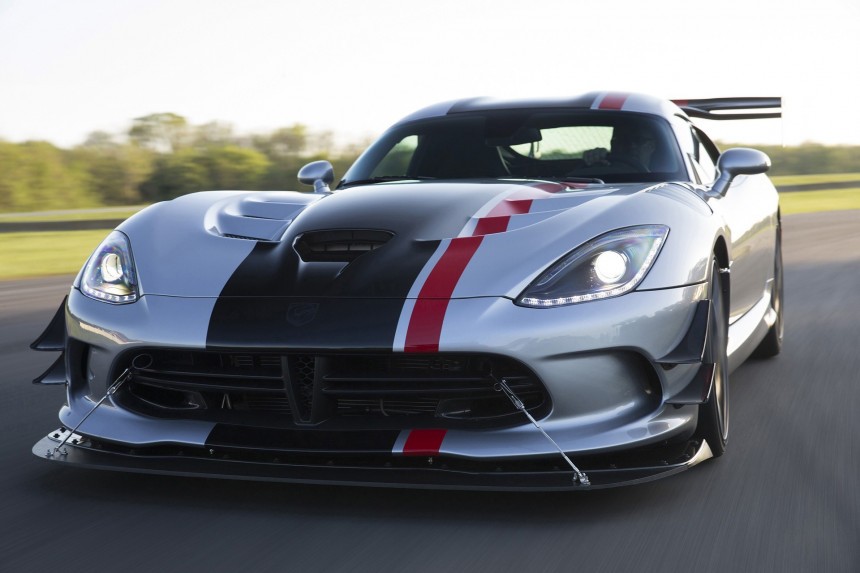Founded in 1900 as the Dodge Brothers Company, Dodge became a Chrysler division in 1928. Initially designated as a mid-priced brand above Plymouth, Dodge became a big player in the muscle car market in the 1960s.
The company is also famous for its long-running line of D-Series trucks (which eventually led to the creation of the Ram division) and is credited with having kickstarted the minivan craze with the Caravan in the 1980s. It also gave us the 426-cubic-inch HEMI, one of the greatest V8 engines ever. At the same time, its modern Dodge Challenger spawned the most powerful factory muscle car in history.
But these are only a handful of outstanding products from Dodge's assembly line. To celebrate one of Detroit's most significant automakers, we made a list of the 50 best Dodge models of all time. Having already discussed numbers 50 to 31, here's part three, which includes numbers 30 to 21.
Introduced for the 2005 model year, some six years before the Ram Trucks brand was separated from Dodge, the modern Power Wagon revived the badge after a 25-year hiatus. Named after the line of civilian four-wheel-drive trucks that Dodge launched in 1945, the 2005 Power Wagon is an off-road-focused version of the heavy-duty 2500 model.
The hauler arrived with many features that made it perfect for the unbeaten path, including electronically controlled locking differentials, a disconnecting front sway bar, and forged wheels wrapped in 33-inch all-terrain tires. The package also included gas-charged shocks, extensive skidplates, a heavy-duty torque converter, and steering gear.
Riding taller than the regular Ram 2500, it also came standard with flared fenders, clearance lights, and tow hooks. Oomph was provided by a 5.7-liter HEMI V8 rated at 345 horsepower and 375 pound-feet (508 Nm) of torque and connected to either a six-speed manual or a five-speed automatic. The modern Power Wagon is still in production as of 2023.
The first-ever muscle car with an all-wheel-drive system, the Challenger GT AWD arrived in 2016. Featuring the same AWD system and suspension as the four-door Charger, it includes both an active transfer case and a front-axle disconnect system.
A rear-biased car (only up to 38% of power is transferred to the front wheels), the Challenger GT AWD can seamlessly transition between rear- and all-wheel-drive in case of rainfall, low temperature, or loss of traction.
Exclusively available with the 3.6-liter Pentastar V6 (rated at 305 horsepower upon introduction), the GT AWD was not only a premiere for the muscle car segment but also a sales success. The coupe is still in production as of 2023.
Relegated to midsize duty, the second-generation Polara was nothing to write home about beyond its somewhat polarizing design and successful career on the NASCAR oval. But that changed when Chrysler developed the race-spec Max Wedge engine.
Initially displacing 413 cubic inches (6.8 liters) and generating up to 420 horsepower, the Max Wedge was enlarged to 426 cubes (7.0 liters) in 1963. Output also jumped to 425 horses with the 13.5:1 compression ratio, which made it as powerful as the 426 HEMI that arrived in 1965.
Created specifically for Super Stock racing, the Max Wedge also got a streetable version that found its way in various Dodge and Plymouth models. The Polara was one of them. And needless to say, the mill turned an otherwise mundane intermediate into a spectacular yet unassuming sleeper. It's also rare as well with only a few units produced.
Yup, you're not seeing things: the 330 is nearly identical to the Polara. That's because they were part of the same intermediate lineup from 1962 to 1964, including nameplates like the Dart and the 440.
But unlike the Polara, which lived on from 1960 to 1973, the 330 was discontinued after only three years in showrooms. And this not only makes it rarer but also a more desirable Max Wedge car. Another thing setting the two apart is the fact that the 330 was only fitted with the 426-cubic-inch version of the Max Wedge V8.
Finally, because it was more affordable and slightly lighter, the 330 Max Wedge was more popular among drag racers back in the day. This led to many examples being crashed at the drag strip, but it also helped the short-lived nameplate gain notoriety as a classic car.
Discontinued in 1959 after ten years on the market, the Coronet returned in 1965. But this time around, Dodge moved the nameplate from the full-size into the midsize segment. It was basically a replacement for the Polara, which grew larger in 1965.
Available in various body styles ranging from sedans and wagons to hardtops and convertibles, the Coronet immediately made headlines thanks to a dozen altered-wheelbase racers that dominated the NHRA scene. These were later joined by a stock-appearing version built for the Super Stock class.
Known as the A990, it came with a race-spec version of the 426 HEMI and an acid-dipped body that was about 60% thinner than the regular Coronet. The package also included removing all convenience features and adding bucket seats from the A100 van, a scooped hood, and a one-inch shorter wheelbase. Dodge built only 101 examples. Plymouth also offered a similar version of the Belvedere.
A full-size car from 1960 to 1961, the Dart was relegated to midsize duty in 1962. One year later, Dodge slapped the badge on a compact car. Aimed at the Ford Falcon and Chevrolet Nova, the Dart was rather lackluster in its first years on the compact market, but it all changed as the muscle car craze left its mark on the entire automotive market.
The 1967 redesign saw the Dart gain the 275-horsepower 340-cubic-inch (5.6-liter) V8 and the 383-cubic-inch (6.3-liter) big block. The latter came with 300 horses on tap. In 1969, Dodge also dropped the 440 V8 in the range-topping GTS for a short while. But the wildest Dart ever built left the assembly line in 1968. It's called the LO23, and it packs the mighty 426 HEMI.
Also developed for Super Stock duty, the LO23 was a massive departure from the regular Dart. Equipped with a fiberglass hood, fenders, and acid-dipped steel doors, it was also devoid of unnecessary convenience features and fitted with the same A100 van seats as the Coronet A990. The underrated 426 HEMI and the race-spec suspension turned the Dart into a 10-second dragster. Dodge made only 50 cars.
The Power Wagon was introduced right after World War II, and the first iteration was essentially a civilian version of the WC-Series. Mechanically similar to the 3/4-ton military truck, the Power Wagon was the first 4x4 medium-duty hauler produced by a major manufacturer in a civilian version.
Boasting a one-ton rating instead of the Army's 3/4-ton, the first series arrived with a gross vehicle weight rating (GVWR) of 8,700 pounds (3,946 kg) and a maximum payload of 3,000 pounds (1,361 kg). The wheelbase varied from 126 to 147 inches (3.2 to 3.7 meters), while the standard bed was eight feet (2.4 meters) long. The 230-cubic-inch (3.8-liter) flathead inline-six was the only engine available until 1961.
The original medium-duty hauler soldiered on until 1971 and got updates in 1951 and 1956. Specific versions remained in production until 1978 for export. In 1957, Dodge also began offering Power Wagon versions of light-duty pickup trucks.
The Viper initially ended up on Dodge's drawing table in 1988 when Chrysler president Bob Lutz suggested to Tom Gale that the company should consider producing a modern version of the Shelby Cobra. The idea morphed into a concept car that debuted at the 1989 Detroit Auto Show. Following an enthusiastic reaction, Chrysler decided to turn the concept into a production model.
A no-nonsense sports car, the first-generation Viper lacked driver aids such as traction control and even anti-lock brakes. It was also devoid of exterior-mounted door handles or key locks and did not get air conditioning until 1994. Airbags were also left out to save weight.
And while American sports cars were usually fitted with V8 engines, the Viper hit showroom floors with a massive, 8.0-liter V10 powerplant. Based on the Chrysler LA V8, it featured aluminum block castings designed by Lamborghini, which Chrysler owned at the time. The V10 was rated at 400 horsepower and 465 pound-feet (630 Nm) of torque, enabling the RT/10 to hit 60 mph (97 kph) from a standing start in 4.6 seconds.
Powered by a 6.4-liter HEMI V8 rated 485 horsepower, the Scat Pack 1320 wasn't as powerful as the SRT Demon that Dodge released in 2018. It wasn't as extreme when it came to drag-spec features either, but it was a cool alternative for muscle car enthusiasts looking to combine road-going fun with exciting weekends at the track.
The Scat Pack bundle included an SRT-tuned suspension, drag-spec wheels wrapped in drag radial tires, adaptive damping, extreme-duty 41-spline half shafts, and a trans-brake. Options included front and rear passenger seat delete and specially-developed Nexen tires for improved drag-strip performance.
And unlike other Challenger models, the Scat Pack 1320 could be modified for NHRA competition per Stock and Super Stock class regulations.
Short for American Club Racing, the ACR badge first found its way on the Viper in 1999. The beefed-up model returned in 2008 and was revived once again for the 2016 model year. One of the most extreme Vipers ever built, the 2016 ACR arrived with an all-new aero body kit made from carbon fiber, producing a whopping 1,500 pounds (680 kg) of downforce while cornering.
Paired with an 8.4-liter V10 good for 645 horsepower and 600 pound-feet (813 Nm) of torque, carbon-ceramic brakes, and an advanced Bilstein suspension system, the Viper ACR lapped the Nurburgring Nordschleife in 7:01 minutes.
Come 2023, the Viper ACR is about a half-minute slower than the current record holder, the Mercedes-AMG One, but it remains the fastest American production car on the German track. It's also more than 10 seconds faster than the contemporary Chevrolet Corvette Z06.
But these are only a handful of outstanding products from Dodge's assembly line. To celebrate one of Detroit's most significant automakers, we made a list of the 50 best Dodge models of all time. Having already discussed numbers 50 to 31, here's part three, which includes numbers 30 to 21.
30. 2005 Ram 2500 Power Wagon
The hauler arrived with many features that made it perfect for the unbeaten path, including electronically controlled locking differentials, a disconnecting front sway bar, and forged wheels wrapped in 33-inch all-terrain tires. The package also included gas-charged shocks, extensive skidplates, a heavy-duty torque converter, and steering gear.
Riding taller than the regular Ram 2500, it also came standard with flared fenders, clearance lights, and tow hooks. Oomph was provided by a 5.7-liter HEMI V8 rated at 345 horsepower and 375 pound-feet (508 Nm) of torque and connected to either a six-speed manual or a five-speed automatic. The modern Power Wagon is still in production as of 2023.
29. 2017 Challenger GT AWD
A rear-biased car (only up to 38% of power is transferred to the front wheels), the Challenger GT AWD can seamlessly transition between rear- and all-wheel-drive in case of rainfall, low temperature, or loss of traction.
Exclusively available with the 3.6-liter Pentastar V6 (rated at 305 horsepower upon introduction), the GT AWD was not only a premiere for the muscle car segment but also a sales success. The coupe is still in production as of 2023.
28. 1963 Polara Max Wedge
Initially displacing 413 cubic inches (6.8 liters) and generating up to 420 horsepower, the Max Wedge was enlarged to 426 cubes (7.0 liters) in 1963. Output also jumped to 425 horses with the 13.5:1 compression ratio, which made it as powerful as the 426 HEMI that arrived in 1965.
Created specifically for Super Stock racing, the Max Wedge also got a streetable version that found its way in various Dodge and Plymouth models. The Polara was one of them. And needless to say, the mill turned an otherwise mundane intermediate into a spectacular yet unassuming sleeper. It's also rare as well with only a few units produced.
27. 1963 330 Max Wedge
But unlike the Polara, which lived on from 1960 to 1973, the 330 was discontinued after only three years in showrooms. And this not only makes it rarer but also a more desirable Max Wedge car. Another thing setting the two apart is the fact that the 330 was only fitted with the 426-cubic-inch version of the Max Wedge V8.
Finally, because it was more affordable and slightly lighter, the 330 Max Wedge was more popular among drag racers back in the day. This led to many examples being crashed at the drag strip, but it also helped the short-lived nameplate gain notoriety as a classic car.
26. 1966 Coronet HEMI A990
Available in various body styles ranging from sedans and wagons to hardtops and convertibles, the Coronet immediately made headlines thanks to a dozen altered-wheelbase racers that dominated the NHRA scene. These were later joined by a stock-appearing version built for the Super Stock class.
Known as the A990, it came with a race-spec version of the 426 HEMI and an acid-dipped body that was about 60% thinner than the regular Coronet. The package also included removing all convenience features and adding bucket seats from the A100 van, a scooped hood, and a one-inch shorter wheelbase. Dodge built only 101 examples. Plymouth also offered a similar version of the Belvedere.
25. 1968 Dart HEMI L023
The 1967 redesign saw the Dart gain the 275-horsepower 340-cubic-inch (5.6-liter) V8 and the 383-cubic-inch (6.3-liter) big block. The latter came with 300 horses on tap. In 1969, Dodge also dropped the 440 V8 in the range-topping GTS for a short while. But the wildest Dart ever built left the assembly line in 1968. It's called the LO23, and it packs the mighty 426 HEMI.
Also developed for Super Stock duty, the LO23 was a massive departure from the regular Dart. Equipped with a fiberglass hood, fenders, and acid-dipped steel doors, it was also devoid of unnecessary convenience features and fitted with the same A100 van seats as the Coronet A990. The underrated 426 HEMI and the race-spec suspension turned the Dart into a 10-second dragster. Dodge made only 50 cars.
24. 1945 Power Wagon
Boasting a one-ton rating instead of the Army's 3/4-ton, the first series arrived with a gross vehicle weight rating (GVWR) of 8,700 pounds (3,946 kg) and a maximum payload of 3,000 pounds (1,361 kg). The wheelbase varied from 126 to 147 inches (3.2 to 3.7 meters), while the standard bed was eight feet (2.4 meters) long. The 230-cubic-inch (3.8-liter) flathead inline-six was the only engine available until 1961.
The original medium-duty hauler soldiered on until 1971 and got updates in 1951 and 1956. Specific versions remained in production until 1978 for export. In 1957, Dodge also began offering Power Wagon versions of light-duty pickup trucks.
23. 1992 Viper RT/10
A no-nonsense sports car, the first-generation Viper lacked driver aids such as traction control and even anti-lock brakes. It was also devoid of exterior-mounted door handles or key locks and did not get air conditioning until 1994. Airbags were also left out to save weight.
And while American sports cars were usually fitted with V8 engines, the Viper hit showroom floors with a massive, 8.0-liter V10 powerplant. Based on the Chrysler LA V8, it featured aluminum block castings designed by Lamborghini, which Chrysler owned at the time. The V10 was rated at 400 horsepower and 465 pound-feet (630 Nm) of torque, enabling the RT/10 to hit 60 mph (97 kph) from a standing start in 4.6 seconds.
22. 2019 Challenger Scat Pack 1320
The Scat Pack bundle included an SRT-tuned suspension, drag-spec wheels wrapped in drag radial tires, adaptive damping, extreme-duty 41-spline half shafts, and a trans-brake. Options included front and rear passenger seat delete and specially-developed Nexen tires for improved drag-strip performance.
And unlike other Challenger models, the Scat Pack 1320 could be modified for NHRA competition per Stock and Super Stock class regulations.
21. 2016 Viper ACR
Paired with an 8.4-liter V10 good for 645 horsepower and 600 pound-feet (813 Nm) of torque, carbon-ceramic brakes, and an advanced Bilstein suspension system, the Viper ACR lapped the Nurburgring Nordschleife in 7:01 minutes.
Come 2023, the Viper ACR is about a half-minute slower than the current record holder, the Mercedes-AMG One, but it remains the fastest American production car on the German track. It's also more than 10 seconds faster than the contemporary Chevrolet Corvette Z06.
